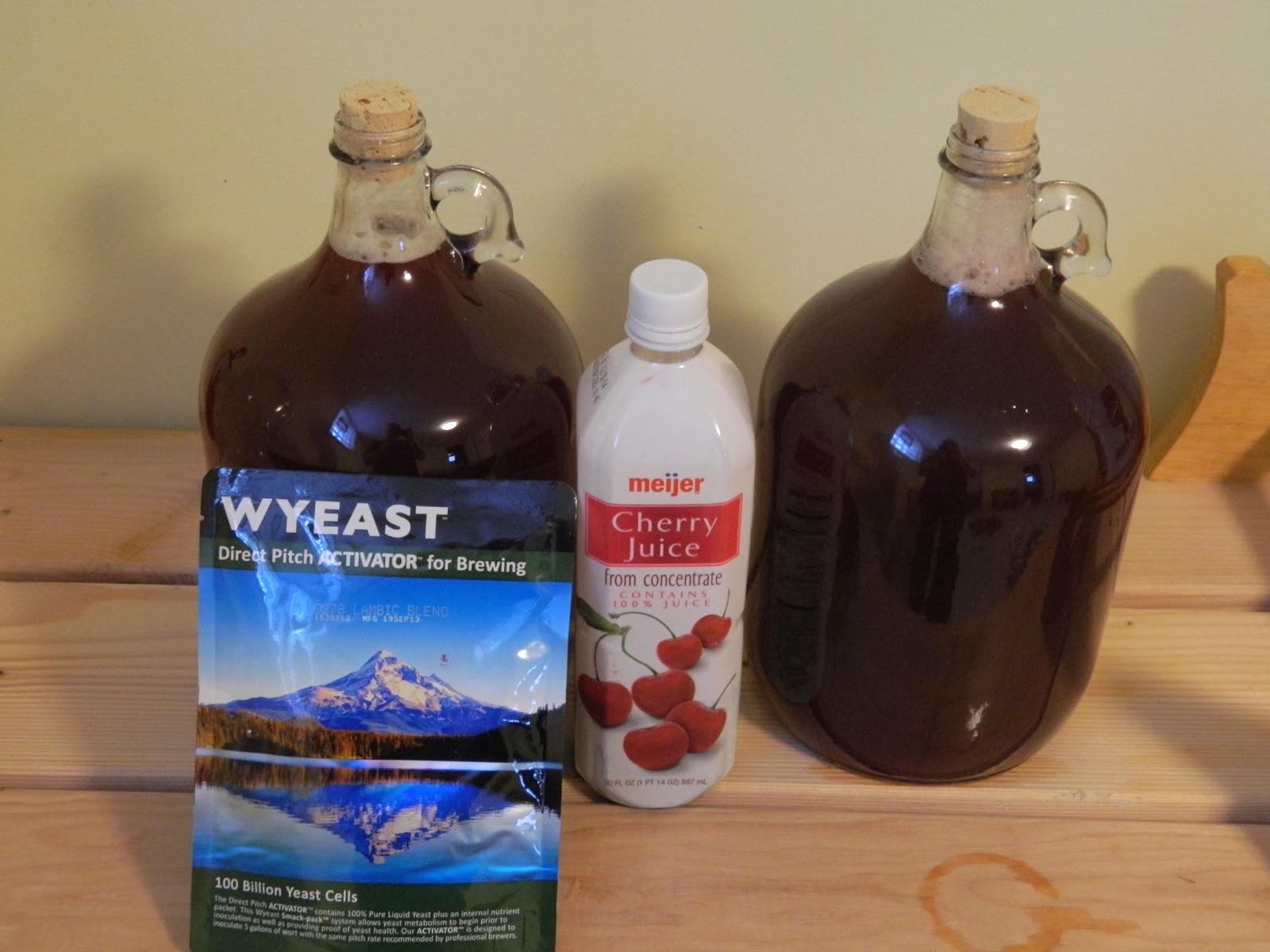The Strong Golden Ale is a traditional Belgian ale most famously brewed by Duvel. It is a Pale to Golden ale with an earthy nose. Usually very clear with a billowing white head. The Strong golden ale should be light bodied with a hint of the deceptively higher abv. This style beer lives up to the Belgian requirement of being digestible and sustaining, in that it should be easy drinking and fulfilling, or full of flavor, at the same time. I plan to brew a pretty straight forward Belgian Golden ale recipe with a little added interest from some Munich malt and wheat. The most famous Duvel is simple grain bill of pilsner and tiny bit of CaraVienne malt for color.
This recipe for a golden ale is designed as a platform for the wild yeast a bacteria to shine. The abv is at the limit of the bacteria's fermentation range and should subsequently highlight more of the Brettanomyces earthy character. I added 5% White Wheat for added head retention and 5% Munich malt for added malt interest. The rest I went with a continental Pilsner malt to get a starting gravity of 1.057 with an 85% efficiency. I get a higher efficiency when doing 2 gallon batches with a no sparge. Then I added plain table sugar at runoff to get a starting gravity of 1.065.
I will be doing an experiment with this beer. Primary fermentation will be carried out by one of White Labs Platinum Strains WLP670 American Farmhouse Ale, then a secondary with oak and lacto. This is rumored to be a culture from The Lost Abbey Saison Blanc. It is a blend of a traditional Saison yeast and Brettanomyces. Tommy Arthur, owner of Lost Abbey, is quoted saying that they originally starting with Brett B, but it has changed to be a house culture now. The experiment I am looking to do is to actually top crop this blend 24-48 hr after fermentation has begun. My hypothesis is that I will have a drastically different yeast profile with each consecutive generation pitched. My goal in this is to test when/if this blend will stabilize and create the same profile in the same wort over time. The saison yeast will more than likely be the first to start fermenting and rise to the top first, so my thought is that the ratio will swing more towards the saison yeast over time leaving the brett more in the background. The lacto will help add that sour element I am looking for in this Rustic Golden Ale.
 Recipe Specifics
Recipe Specifics
Batch Size: 2.5 gallons - 2 gallons into FV
Total Grain: 4.5 lbs
Anticipated OG: 1.065
Anticipated SRM: 3.5
Calculated IBU: 25
Brewhouse Efficiency: 85%
Wort Boil Time: 90 min
Grain
80 % 4 lbs Pilsner
5 % .25 lbs White Wheat
5% .25 lbs Munich Malt 10L
10% .5 lbs Table Sugar
Hops
.5 oz Crystal (4.7% AA) 60 min
.25 oz Crystal (4.7% AA) 30 min
Extras
.25 tsp Yeast Nutrient
1 tsp Irish Moss
1/20/15 - Brewed. Efficiency was lower than expected. May use fly sparge instead of no sparge next brew. OG was 1.054 instead of 1.065 that I was shooting for. Pitched WLP 670 at 64 degrees F.
1/22/14 - Yeast has really taken off. The fermenter is sitting on a heating pad on low to keep temps up as it is cold in my basement and this yeast prefers blood warm temps.
1/23/14 - Cropped yeast from the top. per a calculation from
Mr Malty.com for pitching from slurry, I cropped by weight at 6.5 grams. I cropped 7.5 grams to allow for non yeast weight. The krausen had droped and may have not gotten a great crop. It dropped quite fast, may have to be ready to cop before the 48 hr mark. Maybe the extra time gave the brett a chance to grow more for the 2nd Batch. Will refrigerate for 4 days as this would be a maximum period of non-use before viability begins to drop.

1/31/2014 - Tranfered to 2 one gallon growlers. Added 2 grams of light toasted american oak chips that were microwaved in boiling water 2 times before added. One was left with only the primary blend to age on oak and the other was innoculated with some left over grain particles and dust to culture some natural Lacto.






